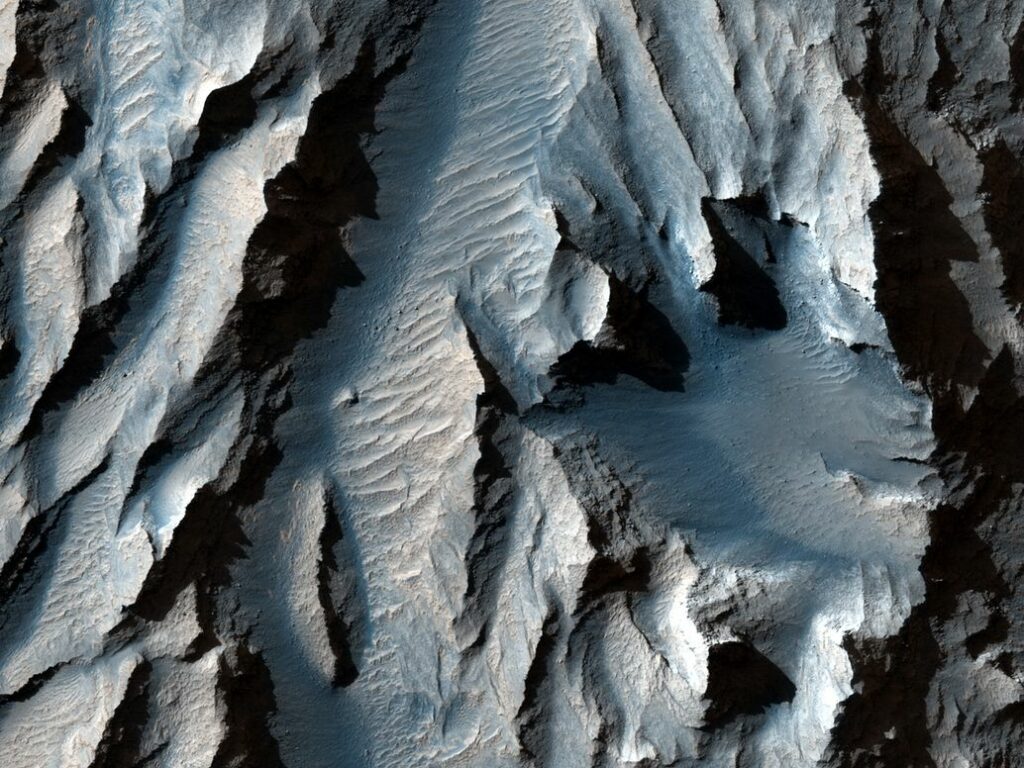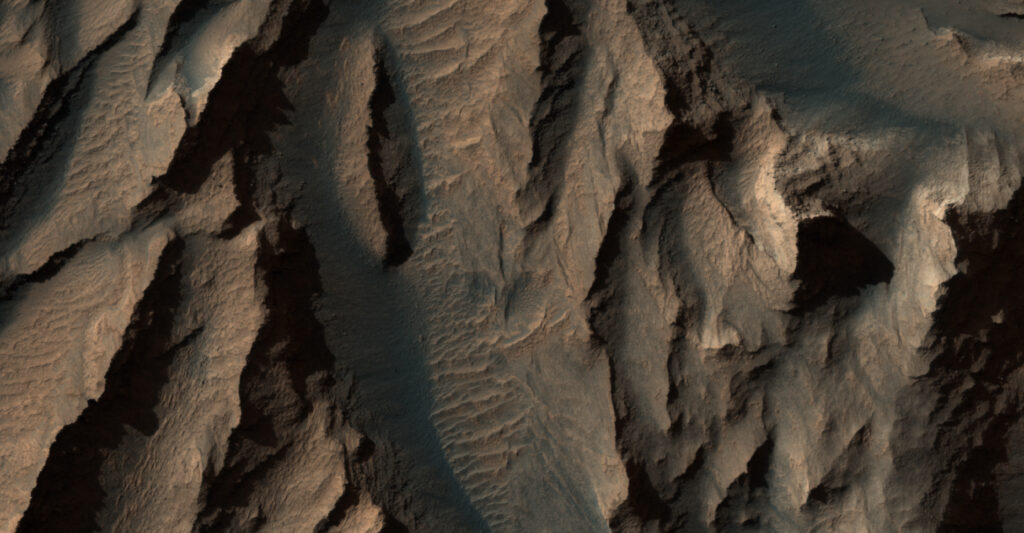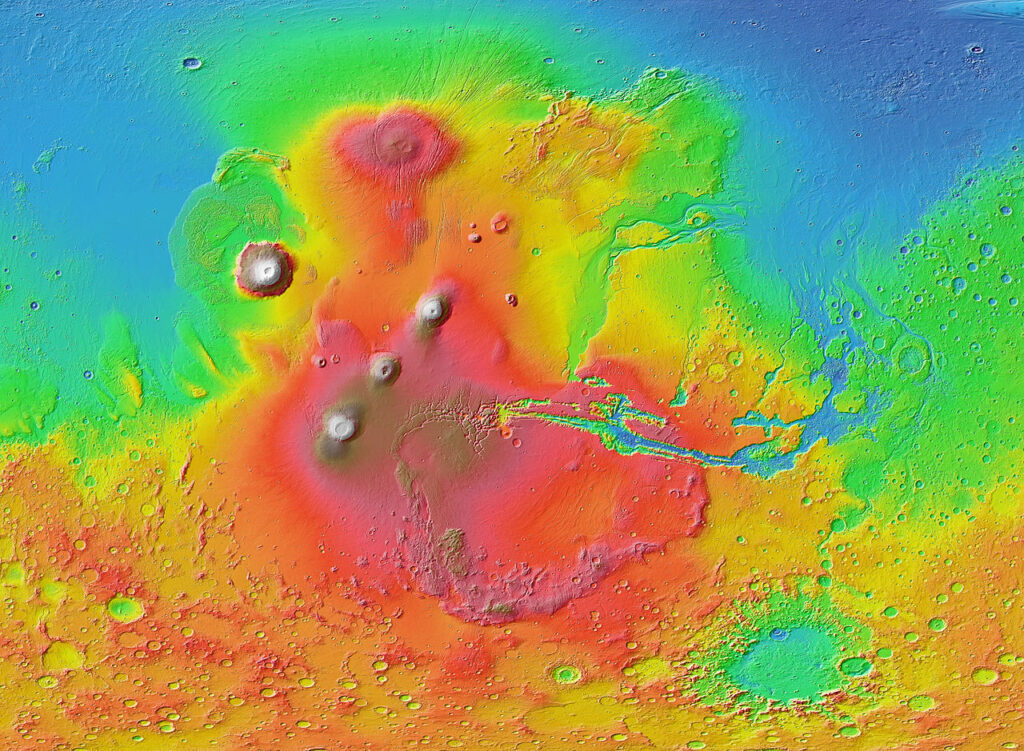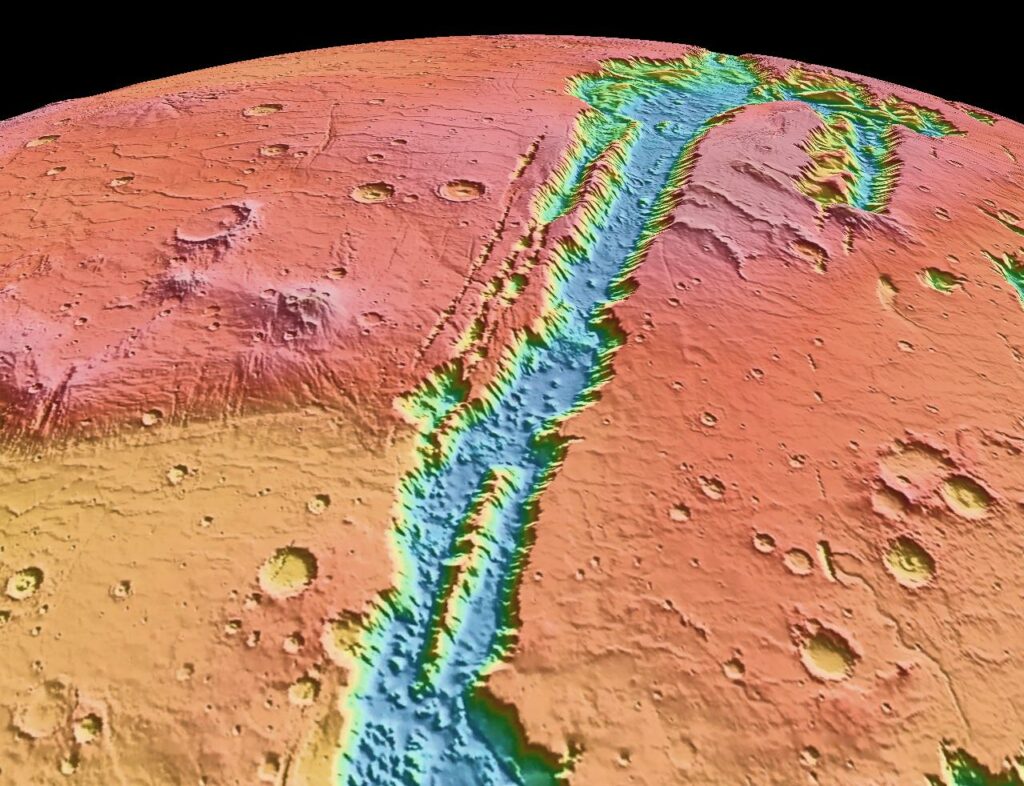It’s called Valles Marineris, and it would put any canyon on Earth to shame. It runs for 2,500 miles (4,000 km) along the equator of Mars — almost 10 times more than the Grand Canyon, and three times as deep. The awe-inspiring canyon was now showcased by NASA in unprecedented detail. Here’s a peek.

Mars is host to some serious geology. Although the planet may not be all that active nowadays, whatever geological forces shaped Mars, they did some tremendous work — Mars is also home to Olympus Mons, the largest volcano in the Solar System, at a height of over 21 km, which may be connected to the canyon. Valles Marineris was imaged with the HiRISE (short for High Resolution Imaging Science Experiment) camera that’s aboard the Mars Reconnaissance Orbiter.
The HiRISE camera itself is pretty big: weighing 64 kilograms (143 pounds) and measuring roughly 0.6 x 1.5 meters (2 by 5 feet), the camera is perfectly equipped for imaging the surface of Mars in unprecedented detail. Its resolution can feature something the size of a desk in a shot that’s 6 km (3.7 miles) wide.
The image above features an area of the canyon called the Tithonium Chasma. If you look at it closely, you’ll see diagonal slashes on the slope — fissures of an unknown origin.
These fissures could be indicative of ancient cycles of freezing and thawing, some researchers believe.

But it’s not clear just how the canyon was produced. According to NASA, Mars is too hot and too dry to have had a river big enough to create this type of canyon. However, it is possible that flowing water could have deepened and widened existing canyons — and we know that Mars likely had massive rivers that flowed for billions of years.
The European Space Agency put forth another theory: that a large portion of the canyon was cracked open billions of years ago, when a group of volcanoes started undergoing massive eruptions. After the original shape of the canyon was produced thusly, water could have come in and done the rest. Researchers from the University of Arizona have also suggested that landslides could have helped widen the canyon. The formation of the canyon is also thought to be connected to the Tharsis Bulge — a vast volcanic plateau in the vicinity of the canyon, home to the three largest volcanoes in the solar system.

This type of high-resolution images is exactly what can help geologists fine-tune their theories of how the canyon was formed. To a geologist, minute details such as sedimentation patterns and fissure systems can be important clues regarding the evolution of the canyon system, and Mars itself.



